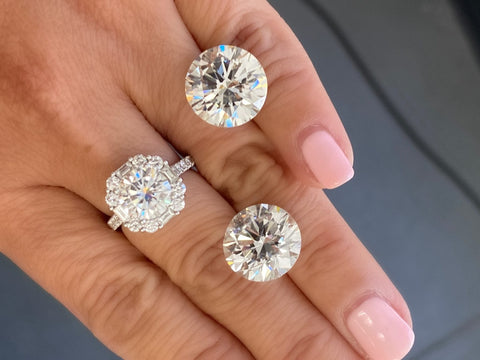
In the realm of luxury, diamonds have always reigned supreme as the ultimate symbol of opulence and elegance. However, recent advancements in technology have introduced a new player into the game: lab-grown diamonds. These man-made gems offer a compelling alternative to natural diamonds, sparking debates and raising questions about their quality, value, and environmental impact. In this comprehensive guide, we delve deep into the world of lab diamonds versus natural diamonds, exploring their differences, similarities, and the future they hold.
Understanding Lab Diamonds
Lab diamonds, also known as synthetic or cultured diamonds, are created through advanced technological processes that simulate the natural conditions under which diamonds form within the Earth’s crust. These processes typically involve either High Pressure High Temperature (HPHT) or Chemical Vapor Deposition (CVD) techniques. By mimicking the natural growth process, lab-grown diamonds exhibit the same chemical, physical, and optical properties as natural diamonds.
One of the most significant advantages of lab diamonds lies in their ethical and environmental implications. Unlike natural diamonds, which are often associated with issues such as conflict mining and environmental degradation, lab-grown diamonds are produced in controlled laboratory environments, minimizing their ecological footprint and eliminating concerns about unethical practices.
Debunking Myths Surrounding Lab Diamonds
Despite their remarkable qualities, lab diamonds vs real diamonds have faced skepticism and misconceptions within the jewelry industry and among consumers. One prevalent myth is that lab diamonds are of inferior quality compared to natural diamonds. However, numerous studies and industry experts have debunked this myth, confirming that lab diamonds possess identical chemical compositions and optical characteristics to natural diamonds. In fact, lab diamonds often exhibit higher levels of purity and clarity, thanks to the controlled conditions in which they are grown.
Another common misconception is that lab diamonds lack value and prestige compared to natural diamonds. While it’s true that natural diamonds have a long-standing history and cultural significance, the value of a diamond ultimately lies in its rarity, beauty, and craftsmanship. As lab-grown diamonds become increasingly prevalent in the market, their value is gradually being recognized and appreciated by consumers who prioritize ethical sourcing and environmental sustainability.
The Advantages of Lab-Made Diamonds
Lab-grown diamonds offer several advantages over their natural counterparts, making them an attractive choice for consumers and jewelry enthusiasts alike. Firstly, lab diamonds are more affordable, typically priced at 20-40% less than natural diamonds of comparable quality. This affordability allows consumers to purchase larger or higher-quality lab made diamonds within their budget, democratizing access to luxury jewelry.
Secondly, lab-grown diamonds provide greater transparency and traceability throughout the supply chain. With blockchain technology and advanced tracking systems, consumers can verify the origin and authenticity of their lab diamonds, ensuring ethical sourcing and responsible production practices. This level of transparency fosters trust and confidence among buyers, who seek assurance that their purchases align with their values and beliefs.
The Future of Diamonds: Embracing Innovation and Sustainability
As society progresses towards a more sustainable and ethical future, the demand for lab-grown diamonds is poised to soar. With advancements in technology and manufacturing processes, lab diamonds continue to improve in quality, variety, and availability. Moreover, their positive environmental impact and ethical credentials resonate with a new generation of conscious consumers who prioritize sustainability and social responsibility.
In conclusion, the debate between lab diamonds vs. natural diamonds extends beyond mere aesthetics or market trends—it encapsulates larger themes of ethics, sustainability, and innovation. While natural diamonds hold a timeless allure and historical significance, lab-grown diamonds represent the future of the industry, offering a sustainable, ethical, and accessible alternative. Ultimately, whether one chooses a lab diamond or a natural diamond, the beauty and value of these exquisite gems remain undeniably timeless.
The post Lab Diamonds vs. Natural Diamonds: Debunking Myths and Embracing the Future appeared first on Stars In Stero Music.